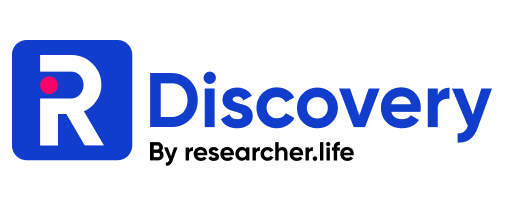A Comprehensive Framework for Mitigating Digital Divide Factors in Higher Education
A Case Study of Kabul University
DOI:
https://doi.org/10.62810/jnsr.v1i1.6Keywords:
Digital Divide, Framework, Factors, Higher Education, Technology Adoption, Access, ConnectivityAbstract
The issue of Digital Divide is a prevalent concern across various educational and non-educational domains in Afghanistan. The situation is particularly challenging at Kabul University, where numerous factors hinder the effective utilization of available digital technologies by students, teachers, and staff. Drawing on the existing factors, our research proposes a comprehensive solution framework to address this problem. Our framework aims to mitigate most of the Digital Divide factors that are present at Kabul University, thereby enabling its stakeholders to leverage digital technologies effectively. Compared to similar frameworks proposed in other developing countries, our approach is specifically tailored to the cultural and educational environments of Kabul University and Afghanistan. As such, it takes into account the unique challenges and opportunities presented by these contexts. Our research is a significant contribution to the discourse on Digital Divide in Afghanistan, and we believe that our proposed framework has the potential to transform the digital landscape of Kabul University. We hope that our findings and recommendations will inform further research and policy interventions in this area, ultimately contributing to the development of a more digitally inclusive society. In our research, we utilized a case study and design science methodology to address the issue of the Digital Divide at Kabul University in Afghanistan.
Downloads
References
Abdirizak, M. N. (2013). Framework for ICT Integration into Teaching and Learning: A Case Study of Defence Forces Technical College (DEFTEC) (Doctoral dissertation, Strathmore University).
Amy Antonio, A., Tuffley, D. (2014). The Gender Digital Divide in Developing Countries. Journal of Future Internet, 6, 673-687; doi:10.3390/fi6040673. DOI: https://doi.org/10.3390/fi6040673
Baha, B., & Diakoumi, M. (2010). Enhancing education in Afghanistan through Information & Communication Technology. In Science Policy Forum of South East Asia and UNESCO. ASEE.
Cavusa, N. & Kanbulb, S. (2010). Designation of Web 2.0 tools expected by the students on technology-based learning environment. Procedia Social and Behavioral Sciences, 2, 5824-5829. DOI: https://doi.org/10.1016/j.sbspro.2010.03.950
Chen, W., & Wellman, B. (2004). The global digital divide–within and between countries. IT & society, 1(7), 39-45.
Dewan, S., & Riggins, F. J. (2005). The digital divide: Current and future research directions. Journal of the Association for information systems, 6(12), 298-337. DOI: https://doi.org/10.17705/1jais.00074
Dhiman, D. (2022). Use and impact of social media on academic performance of Kurukshetra University students: A case study. Use and Impact of Social Media on Academic Performance of Kurukshetra University Students: A Case Study (September 8, 2022). DOI: https://doi.org/10.2139/ssrn.4212827
Edmunds, R., Thorpe, M. & Conole, G. (2012). Student attitudes towards and use of ICT in course study, work and social activity: A technology acceptance model approach. British Journal of Educational Technology, 43(1), 71-84. DOI: https://doi.org/10.1111/j.1467-8535.2010.01142.x
Fuchs, C., & Horak, E. (2008). Africa and the digital divide. Telematics and informatics, 25(2), 99-116. DOI: https://doi.org/10.1016/j.tele.2006.06.004
Grigg, A. T. (2016). Evaluating the effect of the digital divide between teachers and students on the meaningful use of information and communication technology in the classroom Edith Cowan University.
Goode, J. (2010). Mind the gap: The digital dimension of college access. The Journal of Higher Education, 81, 5, 583-618. DOI: https://doi.org/10.1080/00221546.2010.11779068
Hayward, F. M., & Babury, M. O. (2015). The struggle to rebuild and transform higher education in Afghanistan. International Higher Education, (81), 18-20. DOI: https://doi.org/10.6017/ihe.2015.81.8737
Jacobsen, W. C., & Forste, R. (2011). The wired generation: Academic and social outcomes of electronic media use among university students. Cyberpsychology, Behavior, and Social Networking, 14(5), 275-280. DOI: https://doi.org/10.1089/cyber.2010.0135
Isroani, F., Jaafar, N., & Muflihaini, M. (2022). Effectiveness of E-Learning Learning to Improve Student Learning Outcomes at Madrasah Aliyah. International Journal of Science Education and Cultural Studies, 1(1), 42-51. DOI: https://doi.org/10.58291/ijsecs.v1i1.26
Khan, G. F., Moon, J., Swar, B., Zo, H., & Rho, J. J. (2012). E-government service use intentions in Afghanistan: technology adoption and the digital divide in a war-torn country. Information Development, 28(4), 281-299. DOI: https://doi.org/10.1177/0266666912438879
Kist, W. (2008). Digital literacies:“I gave up MySpace for Lent”: New teachers and social networking sites. Journal of Adolescent & Adult Literacy, 52(3), 245-247. DOI: https://doi.org/10.1598/JAAL.52.3.7
Miah, S. J., & Genemo, H. (2016). A Design Science Research Methodology for Expert Systems Development.
Australasian Journal of Information Systems, 20, 1–29. https://doi.org/10.3127/AJIS.V20I0.1329 DOI: https://doi.org/10.3127/ajis.v20i0.1329
MCIT. (2015). Ministry of Comunication and Information Tecnology Strategy report from 2015-2019.
Mehmood, S., & Taswir, T. (2013). The effects of social networking sites on the academic performance of students in college of applied sciences, Nizwa, Oman. International Journal of Arts and Commerce, 2(1), 111-125.
Noori, A. Q., Orfan, S. N., Akramy, S. A., & Hashemi, A. (2022). The use of social media in EFL learning and teaching in higher education of Afghanistan. Cogent Social Sciences, 8(1), 2027613. DOI: https://doi.org/10.1080/23311886.2022.2027613
Okolocha, C. C., & Nwadiani, C. O. (2015). Assessment of Utilization of ICT Resources in Teaching among Tertiary Institution Business Educators in South Nigeria. Journal of Education and learning, 4(1), 1-10. DOI: https://doi.org/10.5539/jel.v4n1p1
Oryakhail, M. S., Saay, S., & Nasery, H. (2021). Challenges in the implementation of e-learning in afghanistan higher education. In 2021 international conference advancement in data science, e-learning and information systems (ICADEIS) (pp. 1-6). IEEE. DOI: https://doi.org/10.1109/ICADEIS52521.2021.9702070
Pegu, U. K. (2014). Information and communication technology in higher education in india: Challenges and opportunities. International Journal of Information and Computation Technology, 4(5), 513-518.
Riggins, F. J. (2005). The digital divide : current and future research directions, 1–54.
UNESCO (2008). ICT competency standards for teachers. Retrieved from http://unesdoc.unesco.org/images/0015/001562/156210e.pdf
Wambugu, N. M. (2016). A Framework Towards Digital Inclusion. A Case Study Of Kiambu County (Doctoral dissertation, University of Nairobi).
Warschauer, M., & Matuchniak, T. (2010). New technology and digital worlds: Analyzing evidence of equity in access, use, and outcomes. Review of research in education, 34(1), 179-225. DOI: https://doi.org/10.3102/0091732X09349791
Waycott, J., Bennett, S., Kennedy, G., Dalgarno, B., & Gray, K. (2010). Digital Divides? Student and Staff Perceptions of Information and Communication Technologies. Computers and Education, 54(4), 1202-1211. https://doi.org/10.1016/j.compedu.2009.11.006 DOI: https://doi.org/10.1016/j.compedu.2009.11.006
Wei, K., Teo, H., Chan, H. C., & Tan, B. C. Y. (2011). Conceptualizing and Testing a Social Cognitive Model of the Digital Divide, 22(1), 170–187. https://doi.org/10.1287/isre.1090.0273 DOI: https://doi.org/10.1287/isre.1090.0273
World Bank Group. (2016). World development report 2016: Digital dividends. World Bank Publications.
Downloads
Published
How to Cite
Issue
Section
License
Copyright (c) 2023 Assistant Prof. Sayed Abid Sadat, Assistant Prof. Sayed Najmuddin Sadaat

This work is licensed under a Creative Commons Attribution 3.0 Unported License.



























